The real tigers who came to tea - and stayed over
- Published
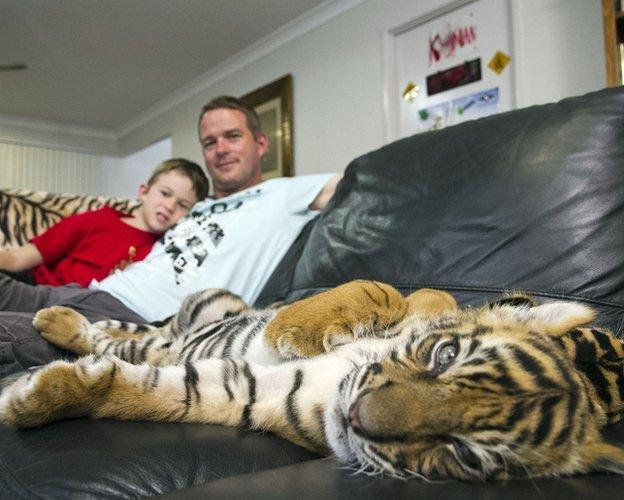
When two rare Sumatran tigers were born in Australia Zoo, north of Brisbane, they were sent to live with one of the keepers for the first few months of their lives. Giles Clark describes what happened when he took them home.
Spot and Stripe were not the first tiger cubs I'd raised in my front room.
I first did it about 20 years ago, when I was still living at my mum's house in north London and was working at a small zoo nearby. I hand-reared numerous litters of lions and tigers there.
Now I live in Australia and have worked at the same place in Queensland for 11 years - these are the first tiger cubs that have ever been born at Australia Zoo.
Globally, a third of Sumatran cubs in captivity don't make it to adulthood, so to ensure their survival I decided to give them round the clock care at home.
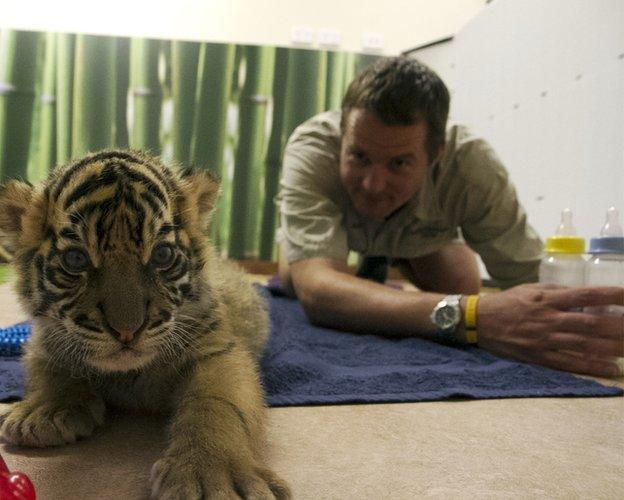
I'd seen how much lion and tiger cubs had trashed my mum's place, and I was determined the same wouldn't happen to my house, so we made a few modifications before they arrived. We rolled up the carpet and put lino down on the floor. Also, because our house is open plan, we had to build some barriers too.
I've got two children living at home - the youngest, my eight-year-old son, Kynan was particularly excited about the tigers arriving - but all of us really relished the opportunity to be part of their lives and watch them grow.
I wasn't worried about bringing them into my home with my wife and kids. These were cubs.
They weighed about 2.5 kg (5lb 8oz) and were so small there was absolutely no risk. In four months, they were never going to grow any bigger than a medium-sized puppy. Just like puppies, they do things like chew on your slippers, but that's about the worst you can expect.
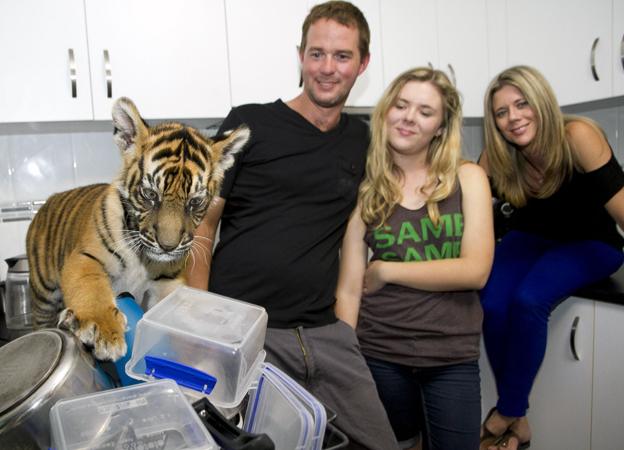
At the same time, it's crucial to always treat them with the utmost respect and never forget what they're capable of - these are wild animals, they're powerful and instinct tells them how to use their teeth and claws.
As they grew more mobile and more robust, we let them roam freely around the house during the day, but when we were asleep we had to contain them in a large room, otherwise they'd get up to mischief.
We'd come down in the morning to find they'd turned the room upside down, and left it looking like a zoo.
Even with us watching them they'd get up to all kinds of things. We let them play on our old sofa - and before long, they'd torn it to shreds as if it were an animal carcass.

The cubs absolutely loved our family dogs Caesar and Ruby, and would play with them as much as each other. They even practiced their stalking technique on the dogs, although the dogs always saw them coming.
From day one, Spot was extremely affectionate with us, and the better behaved of the two - he always looked for attention and comfort. Stripe was far more mischievous and playful, and would usually be the one who would pounce on his unsuspecting brother.
Things quickly got very intense due to the sheer amount of energy required to look after them.
I was grateful that my family was there to help me. We had to have a bit of a production line going, making up formula out of giant boxes marked "tiger milk", washing and sterilising baby bottles and cleaning the floors.
Tiger cubs Spot and Stripe lived at Giles Clark's house in suburban Australia for four months
When they're very little, their mum would normally help stimulate them to poo and wee. As she wasn't there, we had to do it instead.
It's a team effort, it's easiest and least messy if you have someone holding them and then you get a nice warm piece of damp cloth or gauze and then you gently rub around the bum area and then they oblige.
There were some tough times to deal with over the four months.
There was a point where I just felt exhausted - it was like having a pair of human babies at home. After finishing the last feed in the evening, it only felt like you put your head on the pillow for a little while and you were back up, getting ready for the morning one.
However hard it got though, I firmly believe we did the right thing.

Not everyone agrees with hand-rearing cubs this way - but to my mind, it's the best thing for them.
These cubs are not going back into the wild, nor will their offspring. They have an important role to play in conservation, both as an insurance population and to help educate the public about the plight of tigers in Sumatra. However, to be brutally honest, if all tigers disappear in the wild tomorrow, we are never going to release tigers from captivity in sufficient numbers to have a viable population.
In an ideal world I would not want to have tigers in captivity - they belong in the wild. Unfortunately, it's not an ideal world and they are facing the prospect of extinction literally down the barrel of a gun. And if I'm going to have them in captivity, I want to give them the best possible lifestyle that I possibly can.
Other zoos will leave the cubs with their mum for 18 months or even two-and-a-half years. I believe that taking them away from their mother when they are new-born and hand-rearing them gives them a much, much better life in captivity because they're better adjusted and suffer less stress.
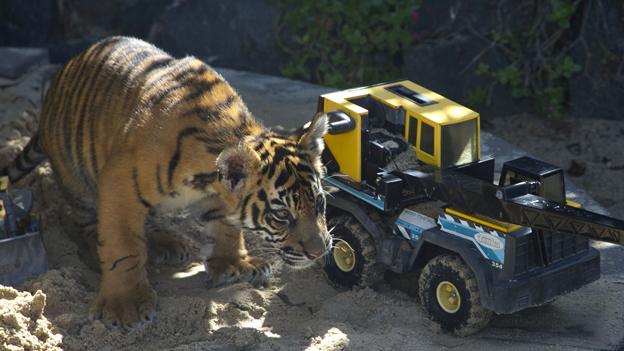
At the same time, by hand-rearing them, we can offer them a whole variety of stimulation and enrichment that otherwise wouldn't be possible.
My team and I are able to walk all of our tigers on leashes in the hundreds of acres of private bushland we have at the zoo - with the exception of dinnertime, it's the highlight of the tigers' day. The stimulation they get from smelling different scents, seeing different surroundings, and having the freedom to explore areas that cats in some other zoos would never get, is priceless.
It's not as much about physical stimulation, it's more about mental stimulation.
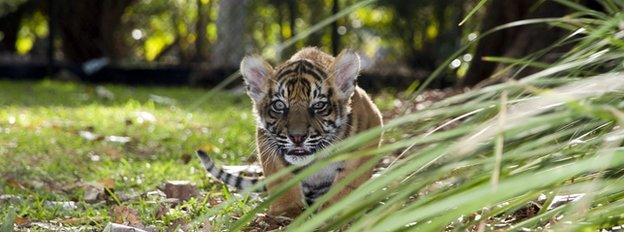
I really want to stress though, that under no circumstances am I suggesting that tigers make good pets. They're still wild animals at the end of the day, and we as handlers spend more time with the tigers than most people spend with their families. It's only because of those years of experience, and the mutual respect we build up, that we're able to have that very controlled relationship with them.
Hand-reared or not, they're big animals, and they can get excited and over-playful, and you're talking about something that weighs more than 120kg (264lb or 18 stone 12) and can run at 40km/h (25 mph).
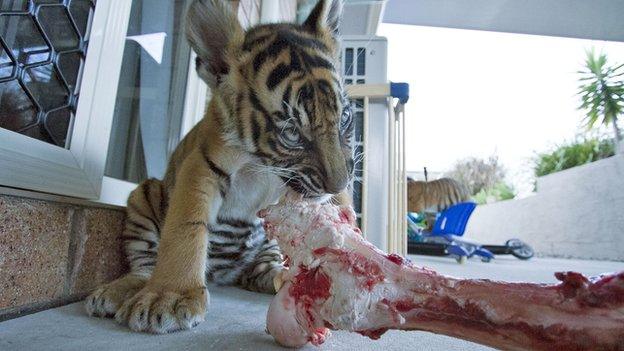
By the time Spot and Stripe got to four months old, they were learning how to open doors and jump fences, and we knew it really was time for them to go.
It was difficult when we had to finally part with them. Obviously we knew that it was coming, it was planned, but it didn't make it any easier those first few days.
It was so quiet in the evenings and Kynan was always a bit disappointed that the cubs weren't there. One of the dogs was always looking for them, convinced that I must have hidden them somewhere else in the house.
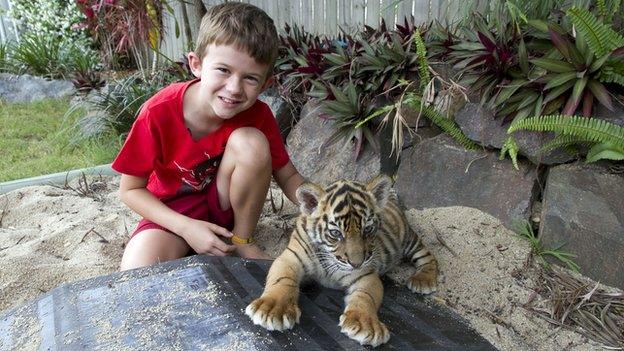
I'm not sentimental about it - if I happen to come across an unopened packet of tiger formula milk left lying in a cupboard, I don't shed a tear. I'm hands-on with them every day at the zoo, and I do look back very fondly on the time that we had them.
Tigers About the House, a three-part documentary series about Giles Clark's life with Spot and Stripe, begins on Monday 16 June on BBC Two at 8pm.
Subscribe to the BBC News Magazine's email newsletter to get articles sent to your inbox.
- Published17 December 2013
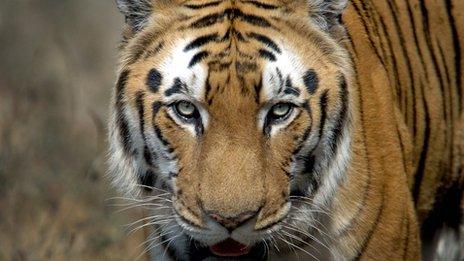
- Published24 May 2013
